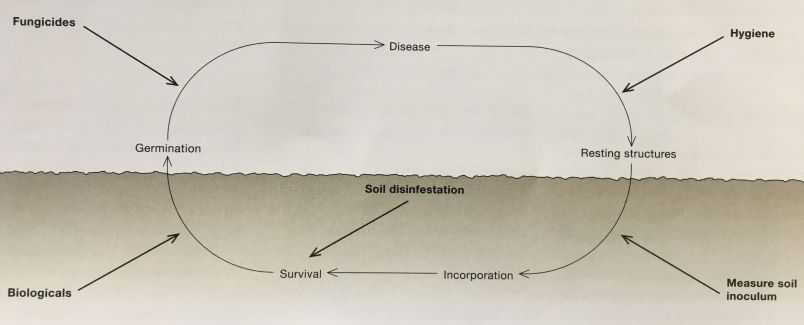Please click here to access the main AHDB website and other sectors.
- Home
- Knowledge library
- Integrated management of soilborne pathogens
Integrated management of soilborne pathogens
There is no simple, single measure that will provide reliable control of soilborne pathogens. However, by thorough soil disinfestation, use of suitable plant protection products at planting, frequent crop monitoring, prompt removal of affected plants (if only a few are affected), minimising crop debris incorporated into the soil, and general good hygiene, it should be possible to keep soilborne pathogens at a low level.
Soil disinfestation options for cut flower growers
Getting the best results
With the loss of all chemical fumigants, steam disinfestation of the soil currently remains the only viable and efficacious process available. Best practice guidance must be followed to get the most from this treatment, and its use should feature in a wider control strategy.
Pre-treatment
- Remove infested crop debris
- Optimise soil structure, moisture content and temperature
- Avoid compaction, lumps, clods or pans
- Prepare soil to the required depth
During treatment
- Select an appropriate application method to ensure good heat distribution through the soil
Post-treatment
- Take care when moving steaming sheets not to re-contaminate disinfested soil
- Clean and disinfect machinery and boots so as not re-contaminate the newly disinfested soil
- Do not cultivate below the treatment depth
- Plant the crop as soon as possible after treatment to reduce the risk of sterile soil being re-colonised by fungal pathogens
Potential components for integrated control of soilborne pathogens

Authors
Author(s) – Dave Kaye and Erika Wedgwood. ADAS Horticulture.
Original author(s) – Tim O’Neill and Kim Parker. ADAS Horticulture.
Webpage content correct as of June 2021.
Topics:
Sectors:
Tags:

